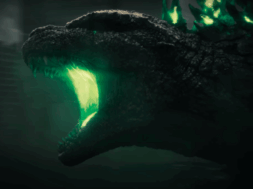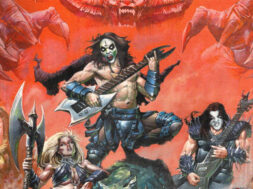Since the very dawn of gaming, titles based on pre-existing IPs have bet on the popularity of famous franchises in order to boost sales and attract fans who might not have been that into gaming before. Unfortunately, years of quality control issues and rushed cash-grabs have tainted the public perception of licensed games, and with the exception of a few recent online titles and the occasional DLC character, the days of video game adaptations for nearly every major theatrical release are behind us now.
However, there’s more to gaming than just AAA releases and big-name publishers, so today I’d like to discuss the weird world of horror fan-games and how they’ve helped to keep franchises alive through sheer passion for their spooky source material. These games might not be as impressive as officially licensed productions, and their legality is sometimes dubious, but there’s definitely something to be said about fans getting together to celebrate their favorite stories and characters with no real expectations of fame and fortune.
In a world where publishers like Konami repeatedly mistreat beloved franchises (even outside the horror genre), it’s kind of heartwarming to see fans band together and produce experimental titles on their own terms. For example, both the Silent Hill and Resident Evil series boast copious amounts of fan projects attempting to revive the charm of earlier games for a new generation. Just taking a quick glance at this massive backlog of unofficial games makes it easy to understand the cultural impact behind these interactive stories.
From Resident Evil: Crossfire (a Brazilian-made love-letter to the original RE games) to Soundless Mountain 2 (a retro remake of Silent Hill 2 more-or-less in the style of an NES title), there are countless original takes on these franchises, some of which are even more entertaining than official releases. Unshackled by financial projections or corporate meddling, these games can take more risks, usually making up for their general janky-ness and lack of a proper budget with sheer creativity.

A bit more charming than disturbing this time around.
Hell, if you dive into the modding scene of almost any major release, you’re sure to find projects that attempt to convert the original game into a horror experience. I admire the hard work and dedication it took to recreate the town of Silent Hill within Minecraft‘s blocky graphics, and anyone who’s played Cry of Fear (a free stand-alone game built on top of Half-Life 2) can attest to how properly developed mods can transform a game into something completely new.
Of course, these passionate projects aren’t limited to recreating the glory of existing videogame franchises, as horror movies have also been getting the fan game treatment for years now. The biggest example of this lies in the online ocean of browser-based flash games. With the rise of easily-accessible internet and user-friendly software in the 2000s, there was an explosion of fan-made browser games featuring licensed characters and locations just for the hell of it.
Afro-Ninja Productions (run by Shawn Tanner, developer of Soda Dungeon) was actually responsible for two of my personal favorites of these strange internet titles, namely Escape From Camp Crystal Lake and Escape From Elm Street. Naturally, these were interactive adaptations of the Friday the 13th and A Nightmare on Elm Street franchises, taking some inspiration from the NES titles that we covered in a previous article. Despite the limited resources, Shawn crafted entertaining (if somewhat brief) point-and-click adventures that became wildly popular at a time when those characters were absent from mainstream gaming.
Of course, there are several other flash-based fan-productions out there, and though the quality of these games may vary, their very existence stands as a testament to just how much these stories and characters mean to people. Beyond the world of flash-games, however, there were also some more ambitious downloadable projects like Hur4c4n Studio‘s infamous Terrordrome. If there was ever a crossover that deserved to be officially licensed, it was this one! Featuring everyone from Pumpkinhead to Herbert West, Terrordrome is both a competent fighting game and a love-letter to the horror genre, not to mention one of the most impressive projects featured in this article.

A dream-come-true for the horror fans of yesteryear.
I remember sharing early builds of the game with friends back in high school (the game took 9 years to complete), always wishing that the project would be picked up by a larger game developer so we could pit Chucky against Ghostface on consoles instead of buggy .exe files.
Obviously, there’s an infinite number of legal reasons why an officially licensed version of Terrodrome could never get off the ground, but it’s still a fun experience that I go back to every once in a while when friends come over. Fortunately, Hur4c4n Studios hasn’t given up on horror fighters, as they’ve been working on a brand new Terrordrome game featuring public-domain characters and some original ideas as well. If it’s even half as fun as the original, then it’s worth keeping an eye on.
In another example of fan-games resulting in original franchises later on, Pig Farmer Games (now rebranded as the indie sensation Puppet Combo) rose to notoriety in 2013 after releasing a Halloween fan-game styled after survival-horror classics from the 90s. Featuring VHS-inspired aesthetics and period-accurate tank controls, the game actually looked and played like a real PS1 title adapting John Carpenter’s quintessential slasher. While the game has since been remade as Babysitter Bloodbath due to copyright shenanigans, it’s still a must-play horror experience for fans of Carpenter’s filmography and survival-horror in general. Plus, if you like this horrific little romp, Puppet Combo’s been churning out quality retro-inspired horror games for a while now, so I recommend checking out their official site.

There’s nothing quite like lo-fi scares.
While the legality of some of these projects is still up in the air, I’ll always be on the side of indie developers wanting to express their love for existing IPs and going out on a limb to create something by the fans, for the fans. It’s really a shame how many of these projects end up abandoned due to pressure from the original copyright owners, but there are rare instances where the opposite can happen. IllFonic‘s Friday the 13th was originally meant to be an off-brand homage to the F13 franchise until they managed to impress producer Sean S. Cunningham. With his support, they upgraded the project to an officially licensed (not to mention incredibly successful) adaptation.
Of course, there are tons of other great fan projects out there (like those Rom-Hacks that attempt to adapt famous “cursed game” CreepyPastas), and this article is by no means a comprehensive retrospective on the history (or current state) of horror fan-games, but I’d like to think of it as an introduction for folks who want to explore a more obscure side of gaming.
In the meantime, don’t forget to tell us about your own favorite fan-games in the comments, as the whole point of these projects is to share them among fellow fans. As for myself, I think I’m going to give Terrordrome another try, and see if I can finally beat the Story Mode with Candyman…









